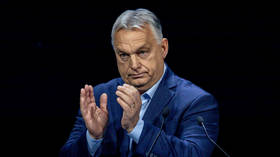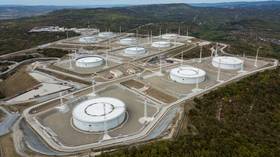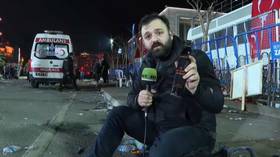Europe’s largest nuclear plant loses power

The Zaporozhye nuclear power plant (ZNPP) in Energodar has again been disconnected from the external power grid and is relying on diesel generators for emergency power to maintain reactor safety, the International Atomic Energy Agency (IAEA) reported on Wednesday.
“The latest incident at the ZNPP highlights the increasingly precarious and challenging nuclear safety and security situation at Europe’s largest nuclear power plant, coming just a few days after it was repeatedly shelled,” said IAEA Director General Rafael Grossi.
The ZNPP lost power at 3:30pm local time, according to the IAEA team on site. Currently, eight out of the 20 emergency generators are providing back-up electricity for the safety equipment. All six reactors are safe and stable, the UN nuclear watchdog added. Four are already in “cold shutdown” mode, while the two that have been in “hot shutdown” in order to provide Energodar with steam heating will be prepared for cooling down.
Russian troops have controlled the plant since February 28. In June, Ukrainian forces began launching drone and artillery attacks on the facility, according to the Russian Defense Ministry. Kiev has denied the accusations and claimed Russia was bombing the plant in “false-flag” operations to make Ukraine look bad.
The attacks stopped after the IAEA left a team of observers on site, but resumed last weekend when over 30 projectiles struck the facility. Moscow has demanded the IAEA do its job and name the culprit, which Russian officials identified as Ukrainian artillery positioned in Marganets, across the Dnieper River.
“We have no way to determine” who carried out the attacks, Farhan Haq, deputy spokesman for UN Secretary-General Antonio Guterres, told reporters on Monday in response to Russian requests. The IAEA reports on the shelling but has not once named the perpetrator. Ukraine’s military has previously admitted targeting the area where the plant is located.
Earlier on Wednesday, Grossi was in Turkey for a meeting with Rosatom director-general Alexey Likhachev. Russia’s atomic energy chief has previously said the Ukrainian shelling of ZNPP has created conditions ripe for a “nuclear disaster.” Grossi said that during the meeting he once again pushed for creating a “nuclear safety and security protection zone” around the plant, an idea that Moscow has repeatedly dismissed as a non-starter, as the Ukrainian forces would not abide by it.














